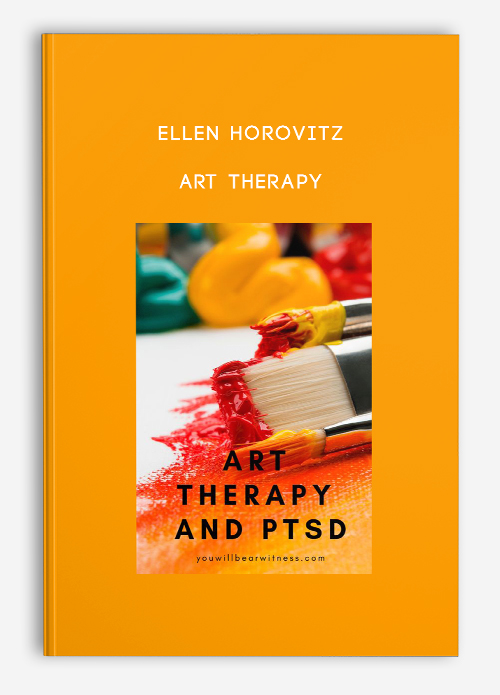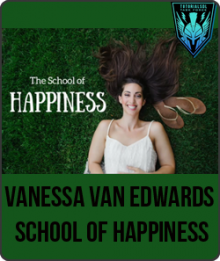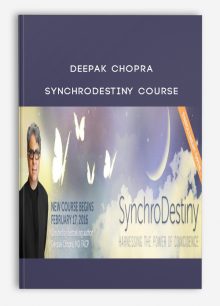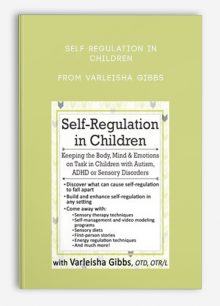Ellen Horovitz – Art Therapy: Hands-on Approaches to Assessment, Diagnosis and Treatment
$109.00 $32.00
Product Include:
File size:
Ellen Horovitz – Art Therapy: Hands-on Approaches to Assessment, Diagnosis and Treatment
**More information:
Get Ellen Horovitz – Art Therapy: Hands-on Approaches to Assessment, Diagnosis and Treatment at Salaedu.com

Description
- Incorporate creative art therapy techniques and interventions for anxiety, PTSD, mood disorders, physical and sexual abuse, dual diagnosis, co-morbidity and more
- Spot normal vs. abnormal development in art
- Recognize cognitive, physical, and emotional irregularities in art
Do you have clients who are stuck, repeating the same patterns over and over and you feel powerless to help them? Are they often resistant to the interventions you offer?
Join internationally known art therapist, Dr. Ellen Horovitz, in this hands-on workshop where she will show you how to incorporate expressive art therapies into your practice in a disarming, imaginative and emotionally-safe manner.
Reach your most resistant patients with evidence-based practices that cut through an array of disorders, including mood, personality, developmental-learning, eating and body disorders. You’ll learn to identify both normal and abnormal artwork from cognitive, physical, emotional and developmental platforms. Add value to your clinical practice by learning creative art therapy modalities that succeed with individuals, couples and families.
Patient video footage of difficult case studies and active hands-on participation will demonstrate how to incorporate these assessments and modalities into your practice. No prior experience necessary!
- Knowing Art Therapy
- Know the ethical implications of using art therapy in your practice
- Learn the psychotherapy behind the art and its language
- Development and Clinical Applications
- Identify normal and abnormal developmental levels of artwork, including organicity and TBI
- Streamline your reports using the apps such as Genogram Analytics, BetterMind, and Limbix
- Assessment: Hands on Activities
- Art Therapy Dream Assessment (ATDA)
- Video case study: Mourning and loss, dually diagnosed patient
- Experience the ADTA firsthand
- Practice how to dialogue with the patient
- Belief Art Therapy Assessment (BATA)
- Video case study: Mourning and loss, dually diagnosed patient
- Experience the BATA firsthand
- Practice how to dialogue with the patient
- Cognitive Art Therapy Assessment (CATA)
- Video case study: Schizophrenic spiraling into OCD moment
- Learn how to redirect the patient
- Experience the CATA and its importance in first art therapy session
- Conducting Additional Assessments
- Kinetic Family Drawing (KFD)
- The Road Test
- Person Picking an Apple From a Tree (PPAT)
- The Bridge Drawing
- Hands-on Techniques for Specific Populations
- OCD and schizophrenic – fiber work
- PTSD, co-morbidity – mask making
- Dysmorphia, eating disorders, and more – body tracings
- Mood Disorders – Breath of Joy exercises
- Sexual/physical abuse survivors – co-operative blankets exercises, safe place/containers
- Couple/ Family Collaborative Drawing Techniques
- Aggressive, self-harming populations – 3-D exercises, paper exercise
- All populations – word exercise – the bag exercise, self-esteem techniques
- Bring an image of your younger self to the workshop or use a current image from your smartphone – Phototherapy techniques
- Art Therapy Dream Assessment (ATDA)
Health and Medical course
More information about Medical:
Medicine is the science and practice of establishing the diagnosis, prognosis, treatment, and prevention of disease.
Medicine encompasses a variety of health care practices evolved to maintain and restore health by the prevention and treatment of illness.
Contemporary medicine applies biomedical sciences, biomedical research, genetics, and medical technology to diagnose, treat, and prevent injury and disease,
typically through pharmaceuticals or surgery, but also through therapies as diverse as psychotherapy, external splints and traction, medical devices, biologics, and ionizing radiation, amongst others.
Medicine has been around for thousands of years, during most of which it was an art (an area of skill and knowledge) frequently having connections to the religious and
philosophical beliefs of local culture. For example, a medicine man would apply herbs and say prayers for healing, or an ancient philosopher and physician would apply bloodletting according to the theories of humorism.
In recent centuries, since the advent of modern science, most medicine has become a combination of art and science (both basic and applied, under the umbrella of medical science).
While stitching technique for sutures is an art learned through practice, the knowledge of what happens at the cellular and molecular level in the tissues being stitched arises through science.
Get Ellen Horovitz – Art Therapy: Hands-on Approaches to Assessment, Diagnosis and Treatment at Salaedu.com
1 review for Ellen Horovitz – Art Therapy: Hands-on Approaches to Assessment, Diagnosis and Treatment
Add a review Cancel reply
Related products
HEALTH - FITNESS - LIFESTYLE - MEDICAL
HEALTH - FITNESS - LIFESTYLE - MEDICAL
HEALTH - FITNESS - LIFESTYLE - MEDICAL
HEALTH - FITNESS - LIFESTYLE - MEDICAL
HEALTH - FITNESS - LIFESTYLE - MEDICAL
HEALTH - FITNESS - LIFESTYLE - MEDICAL
HEALTH - FITNESS - LIFESTYLE - MEDICAL
HEALTH - FITNESS - LIFESTYLE - MEDICAL











king –
“We encourage customers to contact Customer Service and think twice before making payment. All course contents will be similar to what is from the author.”
Thank you!